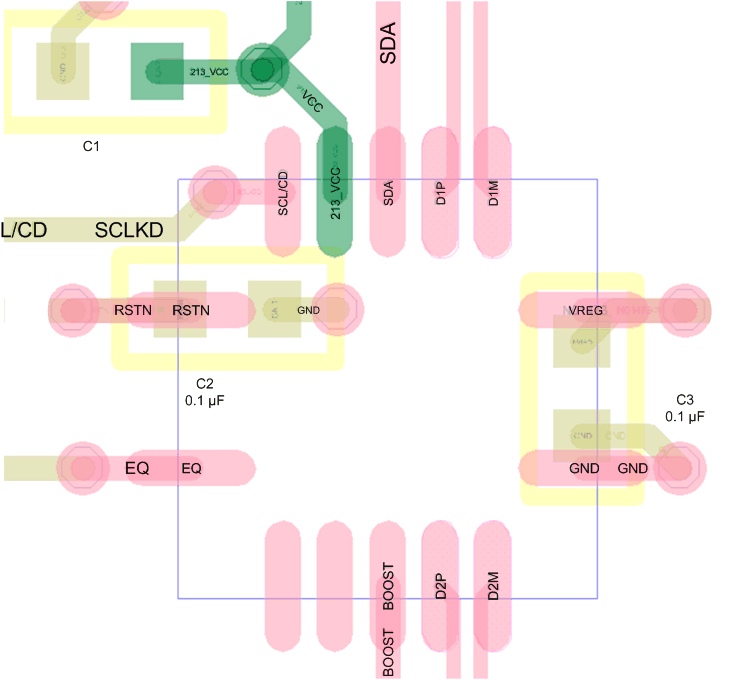ZHCSGQ4 September 2017 TUSB213-Q1
PRODUCTION DATA.
10 Layout
10.1 Layout Guidelines
To avoid the need for signal vias, it is highly recommend to route the High Speed traces on the same surface layer than the TUSB213-Q1 is placed. shows an example how one could layout the PCB for TUSB213-Q1.
The layout should use impedance controlled traces to maintain 90 Ω differential impedance for the whole signal path as required per USB 2.0 specification. General guidelines for highspeed signal routing apply.
10.2 Layout Example
 Figure 22. Layout Example
Figure 22. Layout Example